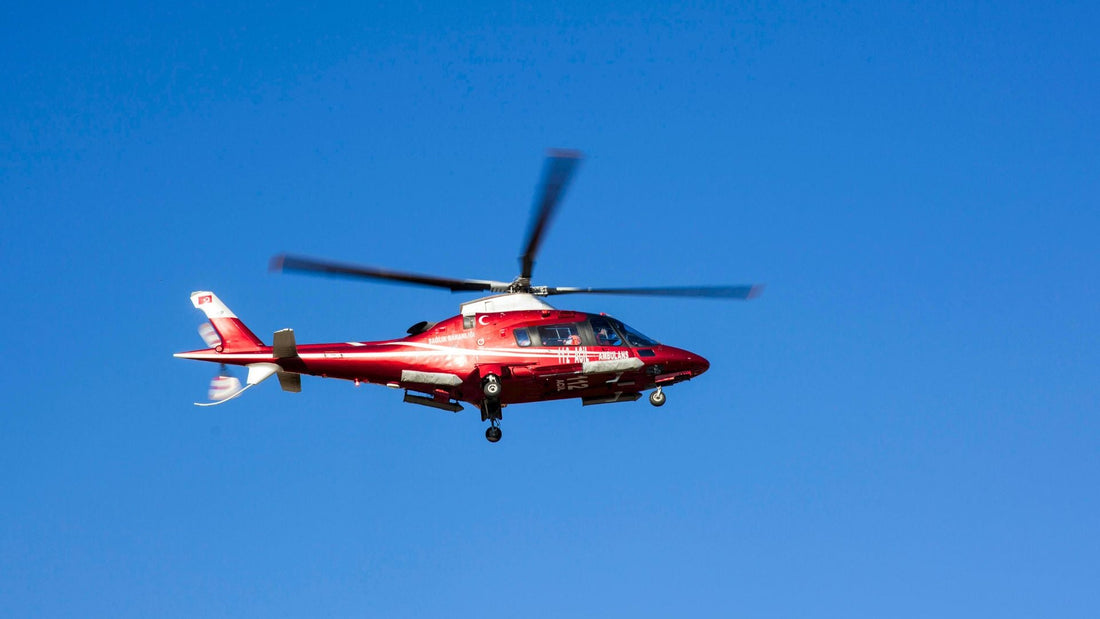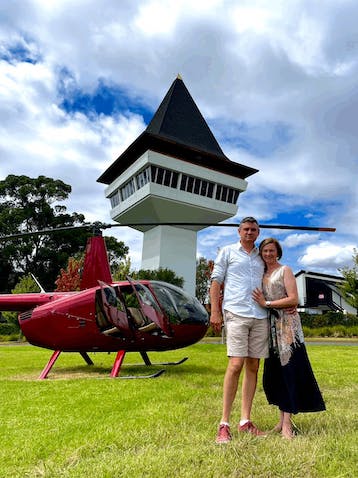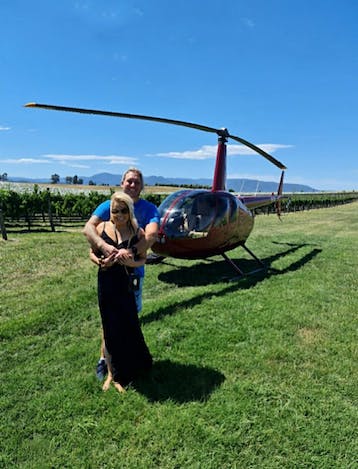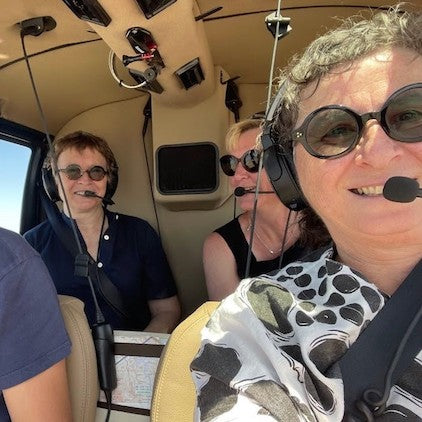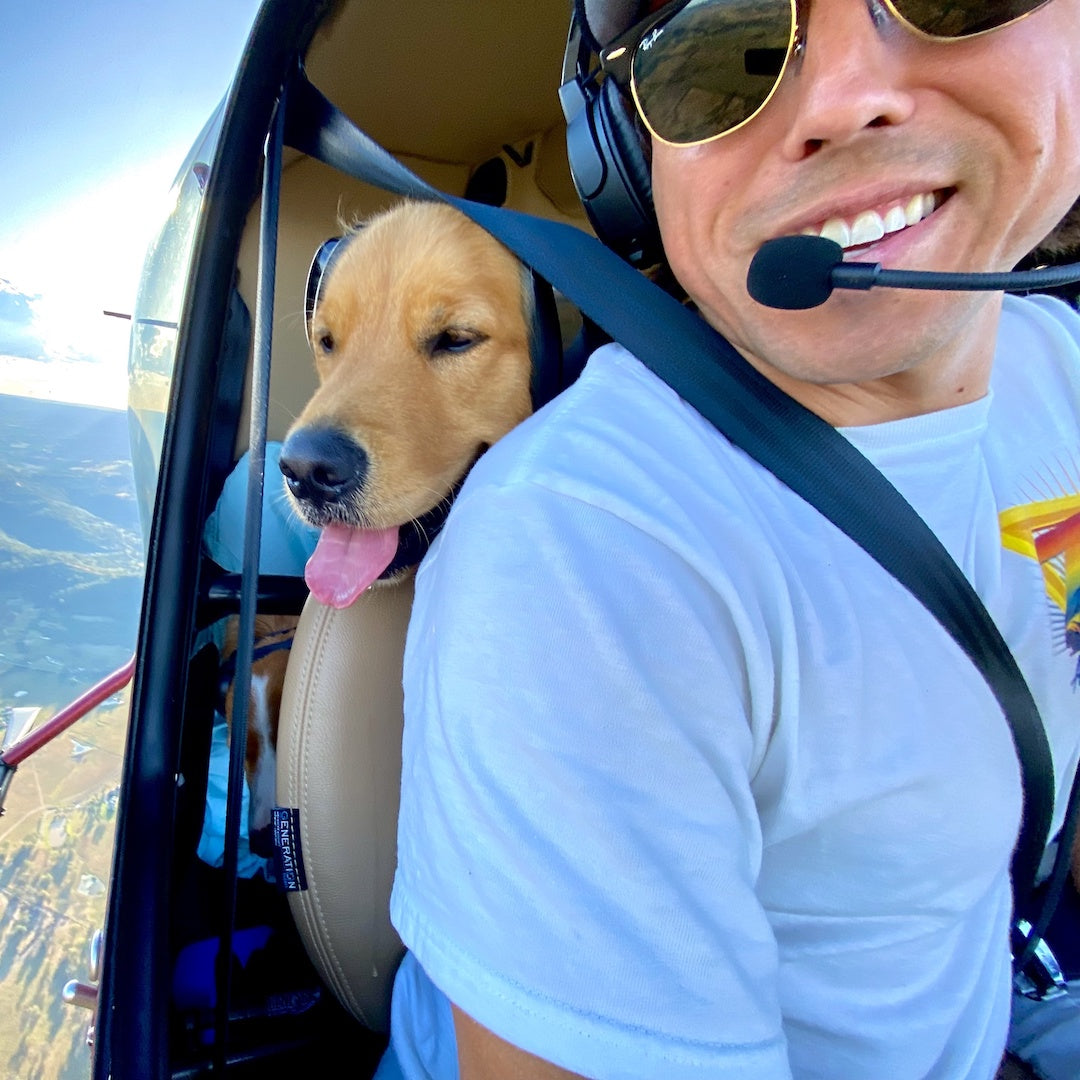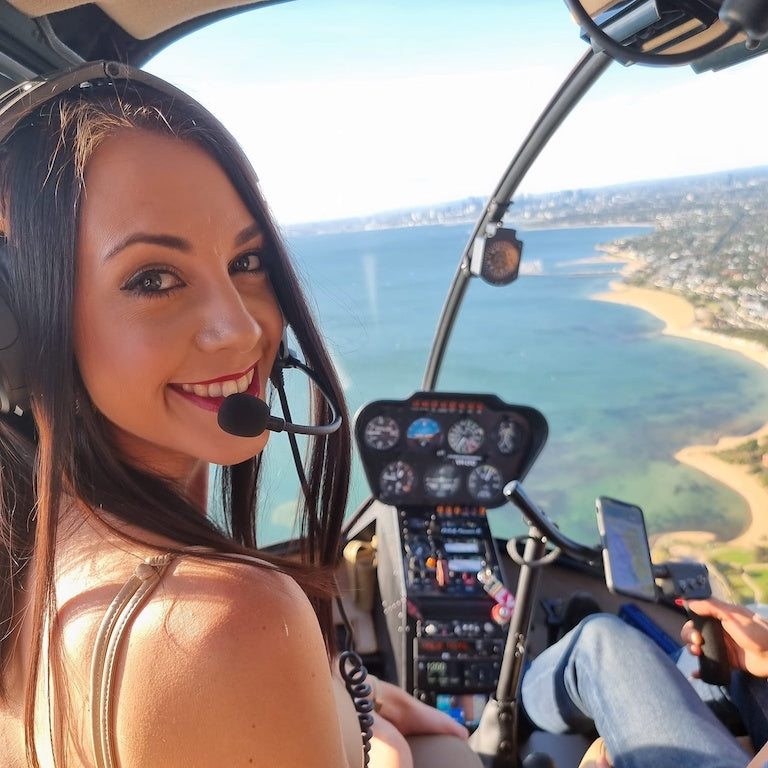Helicopters are some of the most impressive machines in the world, and although they might not fly as fast as fixed wing aircraft, they can still achieve exhilarating top speeds.
Today we’re going to look at average helicopter speeds of conventional helicopters, military helicopters, and more, as well as some of the world’s fastest helicopters.
The average speed for helicopter flight is between 153 and 257 kilometres per hour, with the fastest helicopters moving at speeds in excess of 320 kilometres per hour. However, there are various factors that affect helicopter flight speed, all of which we’ll examine today.
So, how fast do helicopters fly?
Table of Contents
- Introduction
- Top Speed - How Fast Do Helicopters Fly?
- Factors That Affect Helicopter Speed
- Average Top Speed According to Helicopter Type
- Average Speed at Which the Most Common Helicopters Fly
- The World Record for Helicopter Top Speed
- Top Speed of Helicopters vs Fixed Wing Aircraft
- The World’s 5 Fastest Helicopters
- The Bottom Line on Top Helicopter Speed
Introduction
Top Speed - How Fast Do Helicopters Fly?
Although the speed of a helicopter is determined by the type of helicopter and other factors, most average helicopters fall somewhere between 153 and 257 kilometres per hour. The fastest helicopters, such as the X2 are able to achieve speeds in excess of 481 kilometres per hour or 299 miles per hour.
As helicopters approach their top speeds, the rotor blades can generate shock waves due to air compressibility, which can limit performance and speed.
However, if you’re asking “how fast do helicopters fly?”, there’s a little more to this than meets the eye, as various factors affect a helicopter’s speed, which we’re about to look at next.
Factors That Affect Helicopter Speed
Exactly how fast a helicopter flies can vary depending on many elements. Aerodynamic factors and the phenomenon of 'flapback' significantly affect the helicopter's speed, as pilots must continually adjust the cyclic control to counteract the resistance felt due to flapback. There are many factors affecting the forward speed and max speed of helicopters. Let’s take a quick look at all of the factors that affect how fast a helicopter moves forward.
Aerodynamics
One of the most important factors to consider when it comes to how fast a helicopter moves forward is the shape of the helicopter, particularly its rotor blades. The more aerodynamically efficient the rotor blades are, the more easily they can cut through the air. This in turn helps to reduce drag and helps the helicopter fly faster.
The retreating blade generates lift differently than the advancing blade, and as helicopters accelerate forward, the retreating blade experiences decreased lift, which can lead to a phenomenon called retreating blade stall.
Warning signs of retreating blade stall include vibration and roughness, and pilots should take corrective measures such as reducing speed and adjusting the angle of attack to prevent it.
The Rotor Blades
Spinning rotor blades are crucial for generating lift, acting like wings. These blades create uneven airflow during forward movement, leading to a need for techniques like flapping to maintain balance and control, which impacts the helicopter's speed.
Speaking of the rotor blades, the rotor disc and the rotor system are also important to consider. For instance, there are some helicopters that use highly advanced rotor designs, such as coaxial rotors or tilt rotors, which can greatly increase the speed at which a helicopter flies compared to conventional helicopters with single central rotors.
The Power-to-Weight Ratio
As is the case with fixed wing aircraft and helicopters alike, even the fastest helicopter in the world is relegated by its power to weight ratio.
In other words, the forward flight speed of a helicopter is in large determined by how much thrust the rotors can produce compared to how heavy the helicopter is. How fast helicopters fly in large is determined by how much power they can produce. Those rotating blades can make a very big difference.
The Environment
Something else to consider when it comes to a helicopter moving forward is the environment and weather conditions. For instance, flying at higher altitudes or in hot weather effectively reduces the helicopters maximum speed due to the conditions that the environment causes. The reason why flying at higher altitudes reduces overall top speed is because of a lower air density. The higher you fly, the lower the air density is, and the less air there is for those rotor blades to hang on to. High altitudes are perhaps one of the biggest determining factors of all.
Pilot Skills
Although technically not a factor that affects the top speed of a helicopter per say, how fast a helicopter moves forward may be affected by pilot skills.
Pilots who are knowledgeable and skilled with their respective aircraft may be able to push their helicopters to fly much faster than pilots with limited skill and experience.
Average Top Speed According to Helicopter Type
Unlike fixed wing aircraft that can move at much higher speeds, helicopters generally have a lower cruising speed topping out at around 257 kilometers per hour, although there are of course much faster helicopters that can achieve extremely high speeds bordering on 500 kilometers per hour.
One thing to consider here is that there are a number of helicopter types, and they all have average top speeds.
Light Utility Helicopters
Light utility helicopters are designed for light tasks, both for military and civilian operation. They can generally achieve maximum forward speeds of 217 kilometres per hour or 135 mph. They're often used for short range training and transportation missions.
Medium Utility Helicopters
We then have medium utility helicopters, What's your slightly more powerful and able to achieve maximum forward speeds of 234 kilometres per hour or 146 mph. They are also used in both military and civilian operations, as well as law enforcement, surveillance, and more.
Military Helicopters (Attack Helicopters)
We then have special military helicopters known as attack helicopters, and these are designed for combat missions in close air support. These can achieve tall speeds in excess of 336 kilometres per hour or 209 mph.
Transport Helicopters
Next, we have transport helicopters, and these are generally also military helicopters used for transporting military equipment and troops. Due to their use in the military, they can often achieve top speeds in excess of 315 kilometres per hour or 196 mph.
Search and Rescue Helicopters
Due to the pressing nature of search and rescue operations, these helicopters can generally move upwards of 276 kilometres per hour or 172 mph, and thanks to extra fuel tanks, can usually stay airborne for over six hours.
Ambulance Helicopters
Next we have ambulance helicopters, and these generally move at up to 241 kilometres per hour or 150 mph. These are designed for high-speed operation when time is of the essence.
High-Speed Helicopters
There are a number of new experimental helicopters such as the Sikorsky X2, which currently has a top speed of 299 mph, or close to 500 kilometres per hour.
Average Speed at Which the Most Common Helicopters Fly
Before moving on to take a look at the officially recognised world record for helicopter flight speed, let's take a look at the top flight speeds of some of the most commonly used and popular helicopters in the world, particularly in the transportation and tourism industries.
- Robinson R44: 204 kilometres per hour (110 knots)
- Bell 505: 232 kilometres per hour (125 knots)
- Bell 407: 246 kilometres per hour (133 knots)
- Airbus EC130: 220 kilometres per hour (119 knots)
- Airbus H125: 246 kilometres per hour (133 knots)
If you happen to book a private helicopter flight in Sydney, Melbourne, or other Australian hotspots, you might have the privilege of flying in one of these awesome machines.
The World Record for Helicopter Top Speed
Although there are technically helicopters that can fly faster. At this time, a specially modified Lynx set the current official air speed record for helicopters at 400.87 kilometers per hour, or 249.09 mph. This official record remains unbroken to this day, although there are models that can technically fly faster.
Top Speed of Helicopters vs Fixed Wing Aircraft
Just to put things in perspective, the fastest fixed wing aircraft in the world, the NASA/USAF X-15, is capable of achieving flight speeds of 1,255 kilometres per hour or 4,520 mph.
The World’s 5 Fastest Helicopters
To round things off, we want to take a look at the world's five fastest helicopters.
Bell Boeing Osprey V22
Although unofficially recognised, at this time, the fastest helicopter in the world is the Bell Boeing Osprey V22, which can move at top speeds of 562 kilometers per hour or 349.8 MPH.
Sikorsky X2
One of the demonstration models from Sikorsky, the X2, was able to achieve a top speed of 481 kilometres per hour or 298.9 mph, mainly thanks to its strong engines and dual rotor design.
Eurocopter X3
The Eurocopter X3 is an experimental helicopter designed to move at high speeds, with breaking speed records being its main purpose. It currently moves at a top speed of 472 kilometres per hour, or 293.3 mph.
The Westland Lynx
As mentioned above, the official world record for the top helicopter flight speed belongs to the Westland links, coming in at 400.87 kilometers per hour, or 249.09 mph.
Sikorsky UH-60 Black Hawk
The Sikorsky UH-60 can move at an impressive speed of 308.9 kilometres per hour or 192 mph. This is a transport helicopter designed for military purposes, along with a reinforced bottom to withstand ground fire.
The Bottom Line on Top Helicopter Speed
Although the maximum speed of the helicopter is determined by many different factors, with more power and advancing blade designs allowing for helicopters to fly at impressive speeds bordering on 500 kmph.
If an exciting and adventurous helicopters ride is something you’d like to experience, book a private helicopter tour with Rotor One!

